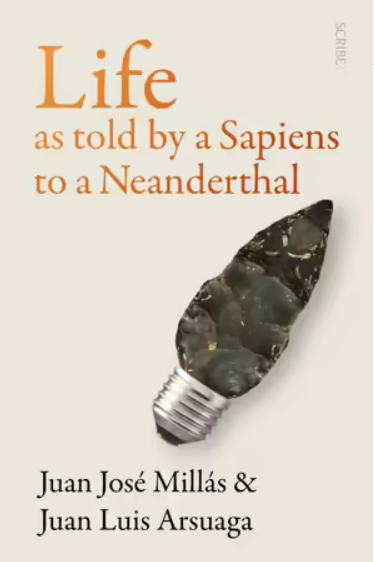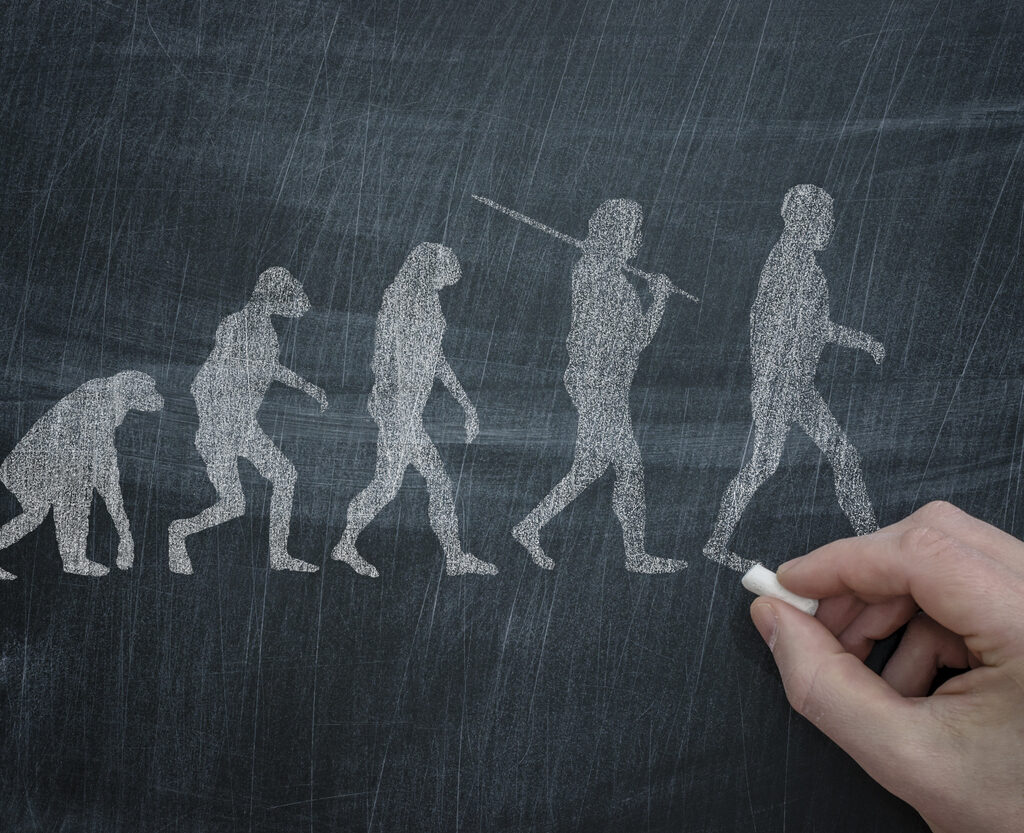Review: Life: as told by a Sapiens to a Neanderthal, Juan Jose Millas and Juan Luis Arsuaga
Juan Jose Millas, a well-known Spanish novelist and something of a happy misanthrope, as writers sometimes are, begins this book by describing his revelation that, despite millennia between us and our neolithic ancestors, we are in ‘extraordinary physical and mental proximity’. He asks Juan Luis Arsuaga, ‘the palaeontologist’, as Millas refers to him, to help him write about this affinity. The result is a book of anthropology that details how different we are to animals, but also how close we are, despite all the technological achievements of the modern world, to our Stone Age ancestors.
They are not the first to write about our ancestors, of course, and the pair travel to archaeological sites, but they do anthropology largely by looking at people in the city around them. That’s the first novelty. The second is that the book is composed largely of dialogue, so that we get characterisations of our authors, as well as information on the prehistoric world. This novelistic feature speeds the book along. Millas makes himself out as the distracted pedestrian, the slow-comprehending, hypochondriac pessimist whose dark jokes ‘the palaeontologist’ doesn’t get. Arsuaga is the straight man and the energetic know-it-all, amazed by human capacity. ‘I like everything’, he says.
They talk about the fact that human conceptions of the world are based on images, whereas dogs, say, construct a world of smells in their brains. Arsuaga explains that our civilisation derives from the fact, first of all, that our hands give us precision movements – gorillas can’t throw spears accurately or use text-messaging. They look at paintings and sculptures in a gallery, from Rubens, Goya and the like, and discuss sexual dimorphism – the physical differences between the sexes. They travel to the site of Spanish cave art to think about cognition, but they do the same at a primary school where Arsuaga conducts an experiment, asking the children to try to duplicate the prehistoric drawings of bison and horses.

Arsuaga explains how the rise of civilisation entailed a self-domestication of humans, accomplished by the more aggressive and less cooperative males being bred out, unconsciously or not. (Just think about, says Arsuaga, how we regularly get together with masses of strangers and it’s all very civilised – mass violence doesn’t break out.) As this happened, we began to differentiate starkly between the safe places of home and community and the wild places, in which prehistoric peoples envisaged strange spirits which had to be placated. Along with this came division of labour, more regular food supplies, probably driven – and this is less commented on – by women’s work of digging, what Arsuaga labels a reversal of the spear into a spade. (Echoes of Isaiah 2 there.)
In the midst of this, there is an interesting discussion of how conceptions of God changed, and how the human construction of God became turned towards a deity interested in social relations. This is meant to indicate that a deity is simply a projection of human needs, though this need not be so: it is understandable that if God is unknowable in his totality, humans focus on what is relevant for them, and our tendency to underestimate God doesn’t mean we have just made him up. The authors go on to argue that our conceptions of the deity reflect the concerns of the ruling classes, but this is interesting to compare to the counter-cultural reflections of the early church. Arsuaga also tends to think an evolutionary perspective discredits Paley’s watchmaker argument* and rids us of a watchmaker thesis, but understanding the forces of nature doesn’t entail banishing the deity. Accepting gravity exists, for example, doesn’t mean we no longer need a God who makes apples fall to the ground.
Nevertheless, as Millas suggests, a dig into anthropology doesn’t reduce existential questions. At one stage he suspects Arsuaga’s scientific dialogue sometimes hides a profound unease about our history. When we talk about human consciousness and the move from hunter gatherer societies to sedentary ones, when we think about our capacity for abstract conception, we ask deep questions about what it means to be human, what our purpose is, both individually and in society. It’s slightly dizzying thinking about how far we’ve come, and how we’ve ended up in this particular state in the twenty-first century.
As Charles Foster points out in his book Being a Human, this doesn’t necessarily indicate a superiority to prehistoric peoples. There are indications that symbolism, abstraction, conceptualising happened pretty early on in our history, and our ancestors had to be extraordinarily aware of, and harmonising with, the world around them. Arsuaga tells Millas that our brains are actually smaller than our prehistoric ancestors. That’s something to think about.
*Rev. William Paley argued in the nineteenth century that if one finds a watch on the ground, one assumes that there was a watchmaker; so, where we see complexity in nature, there must be a cosmic designer.
Nick Mattiske blogs on books at coburgreviewofbooks.wordpress.com and is the illustrator of Thoughts That Feel So Big.













